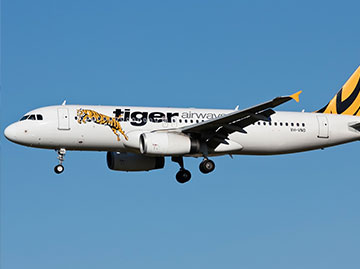The crew of this Tiger Airways A320 followed emergency procedures effectively to handle a potentially serious situation that affected three cabin crew members.

On 1 March 2016, a Tiger Airways Airbus A320 aircraft departed Brisbane, Queensland, on a scheduled passenger service to Melbourne, Victoria. On board were the captain, the first officer, four cabin crew members, and 63 passengers.
At about 0900 when the aircraft was above Parkes, New South Wales, the cabin crew detected a strong odour in the rear of the cabin, and notified the captain. The cabin crew were unsure what the smell was, but they later described it as being similar to an extinguished cigarette.
At 0933, as the aircraft was about 211 km north of Melbourne, the cabin crew manager advised that three cabin crew members were feeling unwell, and that one had vomited.
The flight crew contacted air traffic control, declared a PAN, and requested direct tracking to Melbourne. The captain advised the passengers that fire vehicles and ambulance would be present for their arrival at Melbourne Airport.
After landing, the aircraft taxied to the bay, followed by the airport rescue and firefighting service. After shutting the engines down, the captain advised the fire commander that other than sick members of the cabin crew, everything was normal. The fire crew did not find any source of fumes or fire, nor did a subsequent engineering inspection reveal the source.
This incident demonstrates effective crew resource management techniques to deal with an abnormal and evolving situation.
Read the report: Fumes event involving Airbus A320, VH-VNO, 211 km north of Melbourne Airport, Victoria, on 1 March 2016


